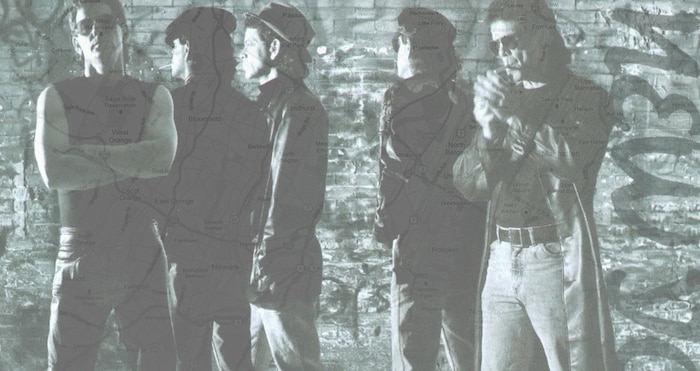Lou Reed’s New York
Piotr Orlov remembers one of Lou Reed’s most underrated contributions to music – his documentation of New York.

The map of Manhattan is a big grid, especially between the bridges. One thing many first-time visitors and new residents do upon arrival is plot points on theirs to remind themselves where they've been and where they may still want to go. Long before he passed away on Sunday at the age of 71, Lou Reed was among mid-century New York's pre-eminent cartographers. Certain kinds of individuals flocked to the city just to follow Reed's path, to see for themselves that "it was alright!" His lyrics turned the grid and its inhabitants into a culture manifest – the places where some young New York adventures ended, and where, for those still curious, a more profound understanding of New York could begin.
It's bizarre to think that before Reed began charting the landscape (i.e. before "Waiting for My Man"), this dirty New York much of the country would soon tell to drop dead hardly existed inside a pop or a rock & roll song. Greasers, cowboys and assorted men in black around the country were already singing about the American soul's inherent darkness, about daily deviance and mindless violence. But while Atomic Age melancholy was infecting doo-wop groups on street corners too, New York songwriters didn't seem keen writing about what it must have seen all around: the folk scene too busy with God on their side, while the lyrical sophisticates of Broadway and Brill ceding the town's dingy colors to the post-Beat authors (Salinger and Selby), as Cole Porter lay dying and Dion's "The Wanderer" remained an outlier (unless you count West Side Story).
Lou was one of the best kind of locals: a pissed-off suburbanite ready to upend society’s norms.
By the mid-'60s, Dylan had become part of the city’s nightlife furniture, chasing Nico into Andy Warhol's Factory parties. (With 20/20 hindsight, you could argue that there was no better way to prepare yourself for The Velvet Underground & Nico than by listening to the heat-pipes of Blonde on Blonde cough.) Yet Dylan was an impersonator, a trickster and a cosmic tourist from the get-go, great for many types of trips, but untrustworthy-as-hell to be the guide.
Lou, on the other hand, was one of the best kind of locals: a pissed-off suburbanite (Freeport, Long Island) with a chip on his shoulder, ready to put his Syracuse education, his admiration of the avant-garde (Delmore Schwartz's poetry, Ornette Coleman's free jazz) and his blue-collar creative ethic towards upending society's norms. Or at least to be society's mirror. Part of Reed's approach, first with the Velvets, but really throughout his career, was to find the beat no one else was bothering to cover.
Taking direction from map-making Lou was how one could find oneself at Lexington 125, and then in a three-story brownstone; or walking down to Union Square to see who was there; or riding the subway to King's Highway for some amusement park attractions; or just hanging on the endless parade of corners. A dangerous city was being outlined, its perils sometimes obvious ("Heroin"), other times vague ("After Hours," which actually only became a peril in the hands of Martin Scorsese, Reed's celluloid counterpart…but still); its line-up of men and women with exotic names and interchangeable identities, was endless. Which is only natural for the naked city and its million stories, if you only knew where to look and possessed some empathy for what you saw.
And so it went, through wild sides and perfect days, patches of downtown dirt and street hassles, Coney Island babies and waves of fear. At some point, Lou’s beat became a pose – and Springsteen borrowed Lou's subjects and made their incidental lives seem heroic, which is an entirely different bag. So Lou took his point of view elsewhere. In the late ’80s, he briefly refocused it on his home, going so far as to name an album after it, pointing out crushing details to visitors from Reagan’s suburbia (the AIDS epidemic, the crack vials), but it was a different reality. For both the city, which had already began its own irreversible sell-off to the bankers, and for him, an idiosyncratic ombudsman who long ago yielded the corners to the rappers he was once compared to. They're the ones making maps now.